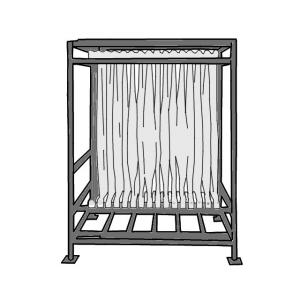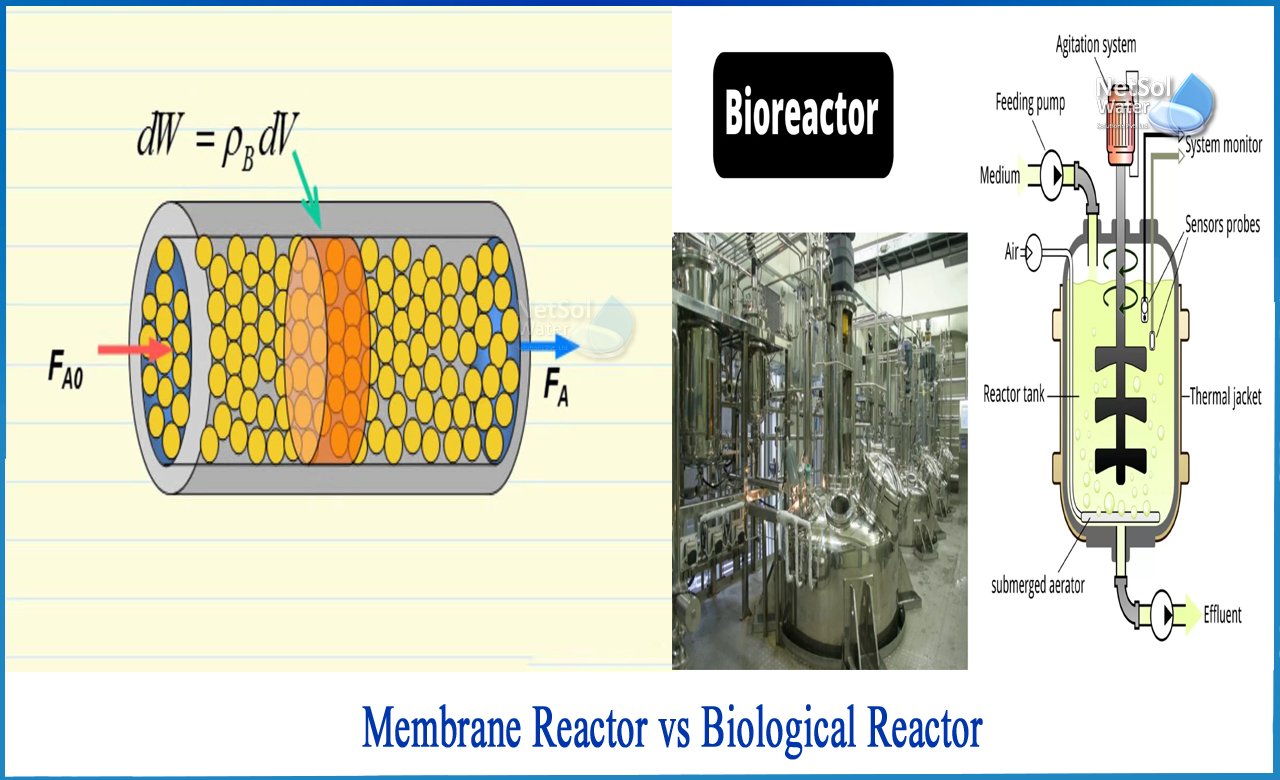Membrane Layer Bioreactors Clarified: Reliable Solutions for Clean Water
Membrane layer bioreactors (MBRs) have arised as an innovative remedy for attending to the pressing challenges of wastewater treatment - Membrane Bioreactor. By integrating organic processes with advanced membrane layer filtration, MBRs not only improve the top quality of treated water yet likewise decrease the spatial demands of therapy facilities.

What Are Membrane Bioreactors?
Membrane layer bioreactors (MBRs) are advanced wastewater treatment systems that combine organic destruction procedures with membrane purification technology. This integration enables the effective removal of contaminants from water, making MBRs a preferred choice in various applications, consisting of metropolitan wastewater treatment and commercial effluent monitoring.

One of the important advantages of MBRs is their capability to generate top quality effluent, often appropriate for reuse in irrigation or industrial processes. In addition, MBRs require a smaller footprint compared to traditional therapy systems, making them excellent for city setups where room might be limited.
Additionally, MBRs can properly handle varying influent loads and are less vulnerable to the impacts of harmful shocks. These features add to their expanding popularity as a sustainable solution for resolving the increasing demand for clean water while decreasing environmental influences.
Exactly How Membrane Bioreactors Job
While the operation of membrane bioreactors (MBRs) might seem complex, it basically revolves around the synergy between organic procedures and membrane purification. MBRs incorporate an organic treatment procedure, normally activated sludge, with a membrane layer splitting up system to deal with wastewater efficiently.
In an MBR system, wastewater is initial presented into a bioreactor where microorganisms deteriorate raw material and other pollutants. The biological task reduces the concentration of contaminants while promoting the development of biomass. Following this organic therapy, the mixed liquor is subjected to membrane layer purification, which can be microfiltration or ultrafiltration, depending on the preferred effluent quality.
The membranes function as a physical barrier, allowing water and small solutes to pass while retaining put on hold solids and larger particles. This enables the system to keep a high concentration of biomass within the reactor, improving the treatment efficiency.
In addition, the continuous separation of cured water from the biomass promotes a compact design and reduces the impact of the treatment center. On the whole, the combination of organic deterioration and membrane layer filtration in MBRs results in effective and reliable wastewater treatment, ensuring high-quality effluent ideal for different applications.
Advantages of MBR Modern Technology
One of the key advantages of membrane layer bioreactor (MBR) modern technology is its ability to create top quality effluent with a substantially reduced impact compared to traditional wastewater therapy methods. MBR systems efficiently combine biological treatment and membrane layer purification, leading to premium elimination of contaminants, consisting of suspended solids, virus, and natural matter. This capability results in effluent that often fulfills or surpasses rigorous regulative criteria for reuse and discharge.
Furthermore, MBR modern technology permits higher biomass concentrations, which boosts the treatment performance and decreases the called for reactor volume. This portable design is especially beneficial in metropolitan locations where space is limited. The functional adaptability of MBR systems likewise indicates they can adjust to varying influent high qualities and circulation rates, making them appropriate for a wide variety of applications.
Furthermore, the lowered sludge manufacturing associated with MBR procedures contributes to decrease operational and upkeep prices. The membrane layers work as a physical barrier, lessening the threat of clogging and enabling longer operational durations between cleansing. Generally, the benefits of MBR modern technology make it an appealing option for lasting wastewater you can check here therapy, dealing with both environmental worries and the demand for efficient resource management.
Applications of Membrane Bioreactors
With their flexibility and effectiveness, membrane bioreactors (MBRs) discover applications across various markets, including local wastewater treatment, industrial processes, and even water reclamation. In municipal setups, MBRs give a portable remedy for dealing with wastewater, successfully getting rid of pollutants while simultaneously producing top quality effluent that satisfies strict regulatory standards. This makes them particularly ideal for locations with restricted area.
In industrial applications, MBR modern technology is made use of for treating process water, specifically in markets such as food and beverage, pharmaceuticals, and petrochemicals. These sectors benefit from MBRs' ability to take care of high natural loads and their performance in recouping important resources from wastewater, such as nutrients and water.
In addition, MBRs play a critical function in water reclamation campaigns, allowing the reuse of treated wastewater for watering, industrial procedures, or also as safe and clean water after additional therapy (Membrane Bioreactor). Their effectiveness in removing virus and pollutants makes them a dependable selection for making sure water quality in numerous reuse applications
Future of Water Treatment Solutions
The future of water therapy solutions is positioned for transformative advancements driven by technical innovation and raising environmental recognition. As global water scarcity comes to be a pressing concern, new techniques, including membrane layer bioreactor (MBR) systems, are established to play a critical duty in enhancing the effectiveness and sustainability of water therapy processes.
Emerging innovations such as expert system and maker learning are expected to optimize therapy procedures, permitting important source real-time monitoring and anticipating upkeep. This will certainly improve the general dependability and performance of water treatment facilities. Additionally, advancements in membrane products, such as graphene and nanofiltration, assure to increase permeation rates and reduce fouling, resulting in lower energy usage and operational costs.
Furthermore, the integration of renewable resource resources into water therapy plants will add to greener methods. The round economy version will additionally obtain traction, motivating the recovery of important resources from wastewater, such as nutrients and energy.
Verdict

Membrane bioreactors (MBRs) have actually emerged as a sophisticated remedy for addressing the pressing obstacles of wastewater treatment. By incorporating biological processes with innovative membrane purification, MBRs not only enhance the top quality of treated water but additionally reduce the spatial demands of therapy facilities.One of the key advantages of membrane bioreactor (MBR) innovation is its capability to generate top quality effluent with a dramatically decreased footprint compared to standard wastewater therapy techniques.With their versatility and performance, membrane bioreactors (MBRs) locate applications throughout various markets, including metropolitan wastewater treatment, industrial procedures, and also water recovery.In conclusion, membrane bioreactors represent a substantial advancement in wastewater treatment innovation, incorporating organic procedures with efficient membrane filtering to create high-grade effluent.